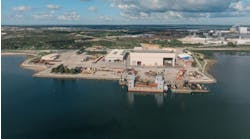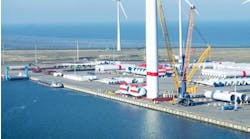Uncertainty clouding UK offshore prospects beyond 2022
Offshore staff
LONDON – Investment in the UK North Sea next year will likely remain near 20-year lows, according to Wood Mackenzie, despite current high oil and gas prices.
Neivan Boroujerdi, principal analyst, North Sea upstream, expects the sector nevertheless to experience steady production growth to 1.6 MMboe/d, with record cash margins, but cautioned that “there are question marks over government and E&P appetite for new developments.
However, there could be an increase in UK offshore transactions, even if regulatory uncertainty suppresses valuations.
Boroujerdi added: “Fiscal changes could become a hot topic. There is high tension between the government’s aspirations to be a net zero leader while still encouraging investment in upstream oil and gas.”
New/forthcoming field start-ups include Harbour Energy’s Tolmount in the southern gas basin, NEO Energy’s Finlaggan and Shell’s Arran and Pierce depressurization projects in the UK central North Sea.
Production should also climb following the completion of last year’s postponed maintenance on the Forties Pipeline System.
“With high prices, operators will try to extend field lives where possible. The savage cost cuts carried out during previous downturns will combine with strong prices to generate cash flow generation levels last seen before the 2008 financial crash.
“The government could be tempted to boost its revenues… The UK’s track record has been to vary tax rates with prices. Another windfall tax cannot be ruled out.
“There would be strong resistance from producers, who would typically stop investment in response. But if the government is already considering winding down the sector, this threat may not be as persuasive as it has been in the past.”
Up to 10 UK offshore projects could receive sanction next year, and an average breakeven price below $40/bbl could be seen as economic.
But there is also the question of uncertainty for investors, given tension between the government’s aims to be a net-zero leader while still encouraging investment in upstream oil and gas.
This year’s pause of the major Cambo oil project west of Shetland and the government’s refusal to approve the HP/HT Jackdaw development plan (both involving Shell) could lead more investors to scrutinize projects based on their carbon credentials and PR impact.
Despite the difficulties, UK exploration activity could double in 2022 with up to 10 prospects set to be drilled. Shell, despite its recent frustrations, will operate its highest number of UK wells since 2006.
Planned wells will target up to 1 Bboe, with stand-out wells likely to include Shell’s HP/HT Edinburgh (388 MMboe) in the Central Graben and Total’s 500-bcf Benriach prospect close to the company’s producing Greater Laggan Area, west of Shetland.
“But scrutiny will persist on exploration’s role in the energy transition,” Boroujerdi warned. “The UK Oil and Gas Authority suspended new licensing in 2021. A permanent suspension remains a – albeit unlikely – possibility.”
Up to $10 billion of UK offshore assets could be up for sale. According to Boroujerdi, bidders could include “boutique acquirers such as trading houses or new privately-backed management teams plug the gap.
“Consolidation is likely to be a driver as investors see value in increased scale and operating efficiencies…Neptune Energy’s rumored merger with Harbour Energy could hint at larger regional tie-ups to come.”
12/28/2021



